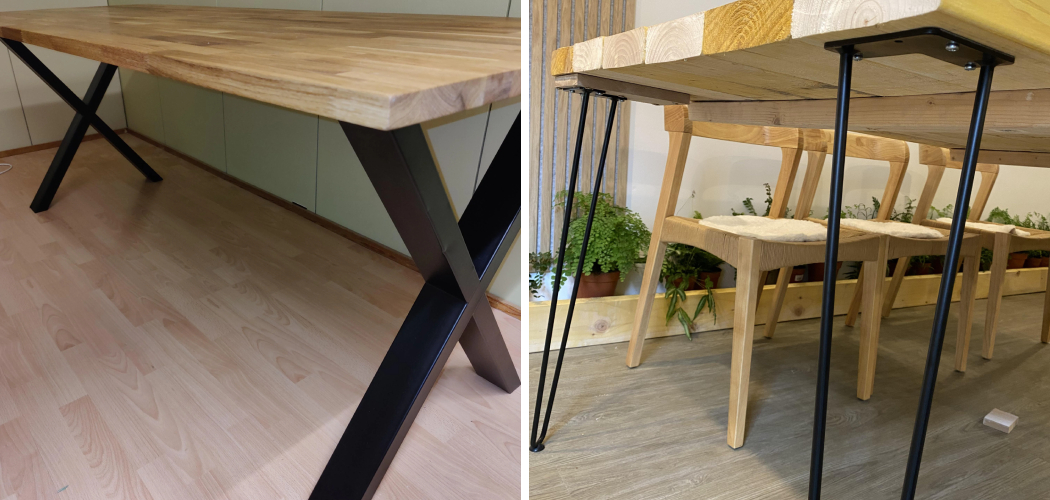Are you ready to transform an annoyingly wobbly table into a sturdy, solid piece of furniture that can handle even the rowdiest family dinners? If annoying tables have been driving you crazy and you’re desperate for a simple solution, then this post is for you!
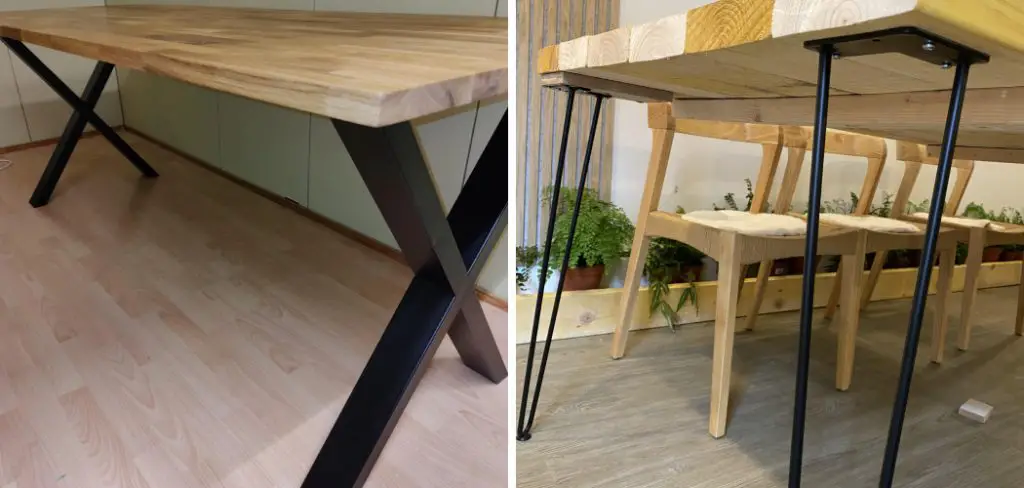
With just a few tools and some easy steps, it’s possible to stabilize your table and make sure it remains level no matter what activities are taking place around it.
In this post, we’ll walk through each step so that regardless of your DIY experience or technical know-how, anyone can learn how to stop a table from swaying. So keep reading if want to find out more about tightening down those legs and making your wobbly table a thing of the past.
9 Best Ways on How to Stop a Table From Swaying
1. Tighten the Screws:
The first and most obvious solution to stop a table from swaying is to tighten any loose screws or bolts that may be contributing to its instability. Use a screwdriver or wrench to tighten any visible hardware, and check for any missing pieces that need replacement. This is a quick and easy fix that can often resolve the issue.
2. Add Felt Pads:
Another simple solution is to add felt pads to the bottom of the table legs. These will provide a cushion between the floor and the table, reducing any movement caused by uneven surfaces or vibrations. Plus, they can help protect your floors from scratches and damage. Adding felt pads is especially effective for tables with metal legs.

3. Adjust the Table Levelers:
Many modern tables come with adjustable levelers attached to each leg. These can be adjusted to change the height of each leg, helping to stabilize the table on uneven floors or surfaces. Use a wrench or pliers to turn the levelers and adjust as needed until your table is level and sturdy. While this solution may require a bit more time and effort, it can be highly effective.
4. Use Shims:
If your table legs are uneven or wobbly due to the floor being uneven, shims can help level things out. Simply place small pieces of wood or cardboard under the uneven leg until the table is stabilized. Though not ideal for long-term solutions, shims can be a quick and easy fix in a pinch. Using an adhesive or glue can help keep the shims in place.
5. Upgrade the Leg Bases:
Sometimes, a table’s instability can be attributed to its leg bases. Consider upgrading to stronger, sturdier bases that are designed for larger weight capacities and better support. This may require some shopping around to find the right fit, but it can greatly improve your table’s stability. If you’re feeling adventurous, you can even try making your own bases using wood or metal.
6. Reinforce the Joints:
For tables with wooden legs, reinforcing the joints where they meet the tabletop can help prevent wobbling. Use wood glue or a dowel to strengthen these connections and add stability to the table. This solution is best for DIY enthusiasts with some woodworking experience. Sometimes, simply adding extra screws to the joints can also help improve stability.
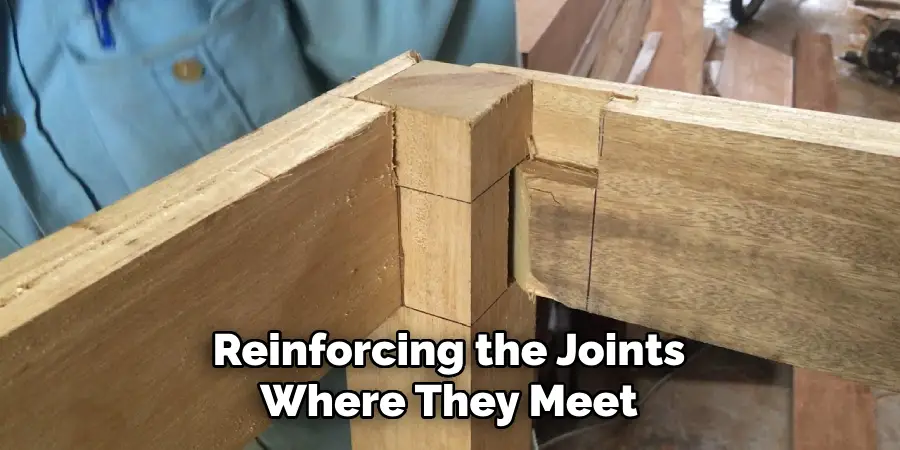
7. Add a Cross Brace:
A cross brace is a piece of wood or metal that connects two legs at the bottom of the table. This creates a sturdy “X” shape that helps distribute weight evenly and prevent swaying. Creating and attaching a cross brace can be more involved than some other solutions, but it can make a significant difference in the stability of your table.
8. Use Weighted Objects:
In some cases, adding weight to the bottom of a wobbly table can help keep it steady. You can use decorative objects like books or vases, or even consider attaching weights (such as sandbags) directly to the legs. This solution may not be aesthetically pleasing, but it can be effective for temporary fixes. Just make sure to secure the weights properly to avoid any accidents.
9. Invest in a New Table:
If all else fails and your table continues to sway no matter what solutions you try, it may be time for a new table altogether. Consider investing in a well-constructed, sturdy table that will provide stability for years to come. You can even use some of the tips mentioned above to help narrow down your search for a more stable table.
With these 9 best ways to stop a table from swaying, you can say goodbye to annoyingly unstable tables and hello to sturdy surfaces that can handle any activity with ease.
Remember, it’s important to address wobbling tables as soon as possible to avoid any potential accidents and damage. So don’t wait any longer, use these tips to stabilize your tables today! Remember to have fun with it and get creative – sometimes the best solutions come from thinking outside of the box. Happy DIY-ing!
Additional Tips and Tricks to Stop a Table From Swaying
1. Always try to place your table on a flat and level surface. If the surface is uneven, try using shims or wedges to level out the table legs. This will help minimize any potential wobbling or swaying.
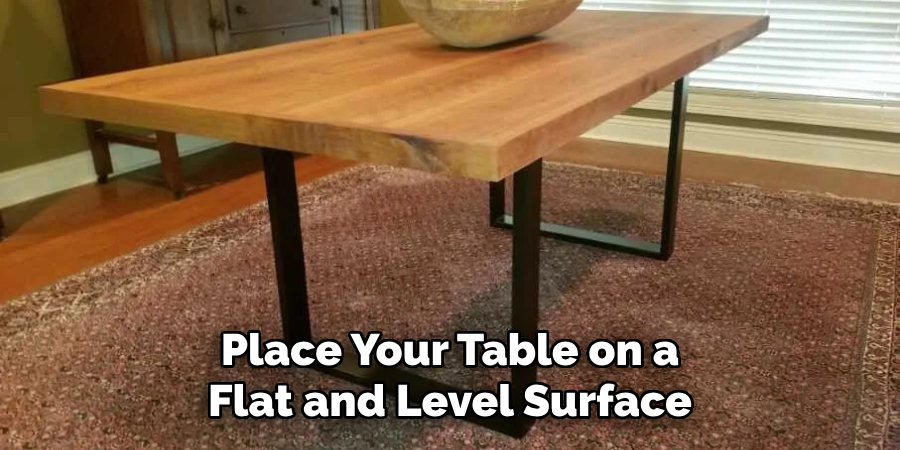
2. If you are unable to find a completely flat surface for your table, consider investing in adjustable feet for the table legs. These can be easily adjusted to account for any unevenness in the surface.
3. For outdoor tables, make sure they are placed on a solid and stable base, such as concrete or pavement. Avoid placing them on grass or dirt which can lead to an unstable surface.
4. If you have a particularly heavy table, consider adding weight to the base of the table. This can be done by attaching sandbags or weight plates to the underside of the table.
5. Another option for stabilizing a table is to add rubber or felt pads to the bottom of the legs. This will not only prevent scratching on floors but also provide some grip and stability.
6. Regularly check and tighten any screws or bolts on your table. Loose screws can contribute to swaying and wobbling.
7. If your table has center support or leg, make sure it is securely attached and positioned correctly. This can provide added stability to the overall structure.
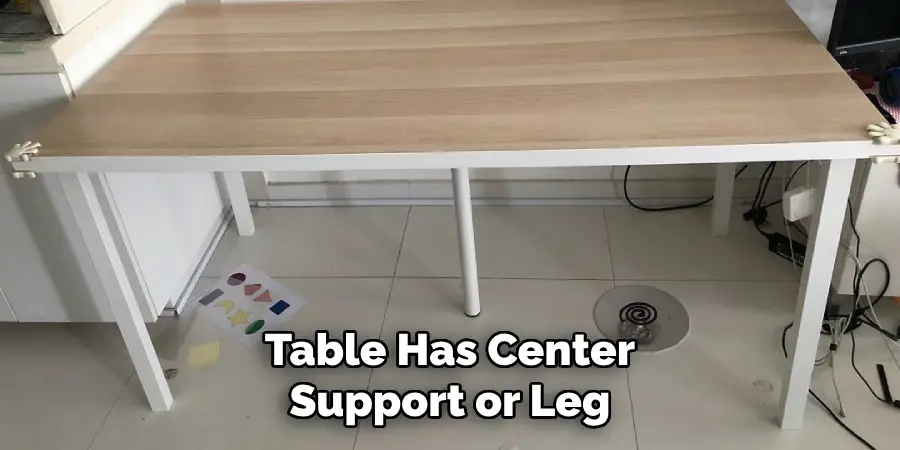
8. Avoid placing heavy objects on only one side of the table, as this can cause an imbalance and lead to swaying or tipping.
9. In cases where none of these tips seem to work, consider hiring a professional to assess and fix any underlying structural issues with the table.
Following these tips and tricks can help ensure that your table stays stable and secure, preventing any accidents or spills. Remember to always prioritize safety when it comes to using furniture in your home or workspace. So, keep these tips in mind and enjoy a sturdy and reliable table for all your needs! Happy table setting!
Frequently Asked Questions
What Causes a Table to Sway?
A table can sway due to various factors such as an uneven floor, loose screws or bolts, worn-out joints, or even an unbalanced weight distribution. It can also be caused by people leaning on the table or strong air currents in the room. Identifying the root cause is important in order to find an effective solution.
How Can I Prevent My Table From Swaying?
There are several ways to prevent a table from swaying. One solution is to adjust the levelers or feet on the bottom of the table legs to ensure a stable base on an uneven floor. Another option is to tighten any loose screws or bolts in the table frame.
If the joints are worn out, they can be reinforced with metal brackets or replaced entirely. Balancing the weight distribution on the table by moving items around can also help stabilize it. Additionally, avoiding leaning or placing heavy objects on one side of the table can prevent swaying.
Can I Fix a Swaying Table Myself?
It depends on the cause and severity of the swaying. If it is a simple issue such as an uneven floor or loose screws, then it can often be fixed by following the steps mentioned above. However, if the issue is more complex or requires special tools or skills, it may be best to seek professional help.
What Should I Do If My Table Continues to Sway After Trying These Solutions?
If none of the solutions mentioned above work, it may be time to consider replacing your table with a sturdier and more stable one. Additionally, if the swaying is caused by external factors such as strong air currents, consider moving the table to a different location or using weights to secure it in place. It is important to prioritize safety and stability when it comes to furniture.
Conclusion
After reading this blog post, you should now have a better understanding of how to stop a table from swaying. Of course, the best solution is to find the source of the instability and apply the proper fix, which could include adding extra screws or sandpaper behind one of the legs, tightening existing screws, or securing it with braces if necessary.
In addition, it’s never a bad idea to always check for any loose parts in case anything comes undone over time. Krafthaus Furniture & Décor offers a great selection of products and repair services that can help identify the cause in an instant and provide reliable solutions quickly. So whether it’s a desk or dining table, don’t wait too long before taking action!

